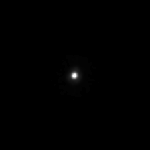(307261) 2002 MS4 facts for kids

(307261) 2002 MS4 is a very large object found in the Kuiper belt. The Kuiper belt is a huge ring of icy bodies beyond Neptune. Scientists think 2002 MS4 might be a dwarf planet.
It was discovered in 2002 by two astronomers, Chad Trujillo and Michael Brown.
How Big is 2002 MS4?
Scientists have used special telescopes to measure the size of 2002 MS4.
- The Spitzer Space Telescope estimated its diameter to be about 726 kilometers (451 miles).
- The Herschel Space Telescope measured it to be around 934 kilometers (580 miles) across.
To give you an idea, this makes it one of the largest objects in the Kuiper belt that doesn't have a name yet.
Is it a Dwarf Planet?
A dwarf planet is a celestial body that is big enough to be rounded by its own gravity, but hasn't cleared its orbit of other objects.
- 2002 MS4 does not have any known moons. This makes it hard for scientists to figure out its exact mass.
- Based on its size, some scientists, like Michael Brown, think it's almost certainly a dwarf planet.
- However, 2002 MS4 is quite dark. This "low albedo" (meaning it doesn't reflect much light) might suggest it's not a dwarf planet. Dark, mid-sized objects like this, especially those less than 1000 km wide, might not have enough gravity to pull themselves into a round shape.
How Does it Spin?
As of 2019, scientists are still trying to figure out how fast 2002 MS4 spins. This is called its rotation period.
- Observations in 2005 and 2011 suggested it might spin once every 7.33 hours or 10.44 hours.
- It's tricky to observe 2002 MS4 because it moves through a part of space that has many background stars. This makes it hard to see changes in its brightness as it spins.
- In 2011, astronomers took advantage of the object moving in front of a dark nebula (a cloud of gas and dust). This helped them get better observations.
Images for kids
-
2002 MS4's position in the constellation Scutum, moving eastward across the brightest areas of the Milky Way
See also
 In Spanish: (307261) 2002 MS4 para niños
In Spanish: (307261) 2002 MS4 para niños



